Par-4/THAP1 complex and Notch3 competitively regulated pre-mRNA splicing of CCAR1 and affected inversely the survival of T-cell acute lymphoblastic leukemia cells
- PMID: 23975424
- PMCID: PMC3898485
- DOI: 10.1038/onc.2013.349
Par-4/THAP1 complex and Notch3 competitively regulated pre-mRNA splicing of CCAR1 and affected inversely the survival of T-cell acute lymphoblastic leukemia cells
Abstract
Although the intensification of therapy for children with T-cell acute lymphoblastic leukemia (T-ALL) has substantially improved clinical outcomes, T-ALL remains an important challenge in pediatric oncology. Here, we report that the cooperative synergy between prostate apoptosis response factor-4 (Par-4) and THAP1 induces cell cycle and apoptosis regulator 1 (CCAR1) gene expression and cellular apoptosis in human T-ALL cell line Jurkat cells, CEM cells and primary cultured neoplastic T lymphocytes from children with T-ALL. Par-4 and THAP1 collaborated to activate the promoter of CCAR1 gene. Mechanistic investigations revealed that Par-4 and THAP1 formed a protein complex by the interaction of their carboxyl termini, and THAP1 bound to CCAR1 promoter though its zinc-dependent DNA-binding domain at amino terminus. Par-4/THAP1 complex and Notch3 competitively bound to CCAR1 promoter and competitively modulated alternative pre-mRNA splicing of CCAR1, which resulted in two different transcripts and played an opposite role in T-ALL cell survival. Despite Notch3 induced a shift splicing from the full-length isoform toward a shorter form of CCAR1 mRNA by splicing factor SRp40 and SRp55, Par-4/THAP1 complex strongly antagonized this inductive effect. Our finding revealed a mechanistic rationale for Par-4/THAP1-induced apoptosis in T-ALL cells that would be of benefit to develop a new therapy strategy for T-ALL.
Figures
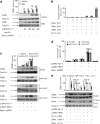

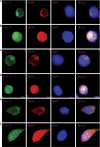
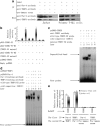

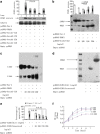
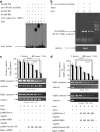
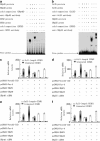

Similar articles
-
A novel long non-coding RNA T-ALL-R-LncR1 knockdown and Par-4 cooperate to induce cellular apoptosis in T-cell acute lymphoblastic leukemia cells.Leuk Lymphoma. 2014 Jun;55(6):1373-82. doi: 10.3109/10428194.2013.829574. Epub 2013 Aug 28. Leuk Lymphoma. 2014. PMID: 23906015
-
The splicing factor CCAR1 regulates the Fanconi anemia/BRCA pathway.Mol Cell. 2024 Jul 25;84(14):2618-2633.e10. doi: 10.1016/j.molcel.2024.06.031. Epub 2024 Jul 17. Mol Cell. 2024. PMID: 39025073 Free PMC article.
-
Zinc-induced modulation of SRSF6 activity alters Bim splicing to promote generation of the most potent apoptotic isoform BimS.FEBS J. 2013 Jul;280(14):3313-27. doi: 10.1111/febs.12318. Epub 2013 Jun 3. FEBS J. 2013. PMID: 23648111
-
CCAR1 and CCAR2 as gene chameleons with antagonistic duality: Preclinical, human translational, and mechanistic basis.Cancer Sci. 2020 Oct;111(10):3416-3425. doi: 10.1111/cas.14579. Epub 2020 Aug 9. Cancer Sci. 2020. PMID: 33403784 Free PMC article. Review.
-
Functions of SR and Tra2 proteins in pre-mRNA splicing regulation.Proc Soc Exp Biol Med. 1999 Feb;220(2):59-63. doi: 10.1046/j.1525-1373.1999.d01-10.x. Proc Soc Exp Biol Med. 1999. PMID: 9933499 Review. No abstract available.
Cited by
-
Mutually exclusive acetylation and ubiquitylation of the splicing factor SRSF5 control tumor growth.Nat Commun. 2018 Jun 25;9(1):2464. doi: 10.1038/s41467-018-04815-3. Nat Commun. 2018. PMID: 29942010 Free PMC article.
-
Dystonia type 6 gene product Thap1: identification of a 50 kDa DNA-binding species in neuronal nuclear fractions.Acta Neuropathol Commun. 2014 Sep 18;2:139. doi: 10.1186/s40478-014-0139-1. Acta Neuropathol Commun. 2014. PMID: 25231164 Free PMC article.
-
The RNAissance family: SR proteins as multifaceted regulators of gene expression.Wiley Interdiscip Rev RNA. 2015 Jan-Feb;6(1):93-110. doi: 10.1002/wrna.1260. Epub 2014 Aug 22. Wiley Interdiscip Rev RNA. 2015. PMID: 25155147 Free PMC article. Review.
-
The tumor suppressor prostate apoptosis response-4 (Par-4) is regulated by mutant IDH1 and kills glioma stem cells.Acta Neuropathol. 2014 Nov;128(5):723-32. doi: 10.1007/s00401-014-1334-7. Epub 2014 Aug 19. Acta Neuropathol. 2014. PMID: 25135281 Free PMC article.
-
The Role of Notch3 in Cancer.Oncologist. 2018 Aug;23(8):900-911. doi: 10.1634/theoncologist.2017-0677. Epub 2018 Apr 5. Oncologist. 2018. PMID: 29622701 Free PMC article. Review.
References
-
- Glienke W, Chow KU, Bauer N, Bergmann L. Down-regulation of wt1 expression in leukemia cell lines as part of apoptotic effect in arsenic treatment using two compounds. Leuk Lymphoma. 2006;47:1629–1638. - PubMed
Publication types
MeSH terms
Substances
LinkOut - more resources
Full Text Sources
Other Literature Sources
Miscellaneous

